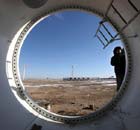-
-
China Daily E-paper
Op-Ed Contributors
China's quiet education revolution
By Abhimanyu Singh (China Daily)
Updated: 2010-04-21 07:54
 |
Large Medium Small |
China has attracted global attention in recent times for its inspiring and staggering achievements in the economic arena. The impeccably organized Beijing Olympics in 2008 and the prospects of the biggest expo in history in Shanghai this year have fired the public imagination and worked wonders for national pride.
Yet, a quiet revolution that has underpinned many of these achievements has gone relatively unnoticed. This is the transformation of China from a largely illiterate country in 1949, when the People's Republic was established, to a country where almost all children attend school for nine years and the literacy rate of young people aged 15 to 24 is 99 percent.
|
||||
This speaks volumes for the vision and determination of the Chinese leadership. Nevertheless, China faces challenges in addressing disparity and quality in education. Viewed in this context, China's Medium and Long-Term Education Reform and Development Plan Outline is a timely response to the challenges of creating a knowledge-based society. The outline was released to the public in February after intensive consultations.
Premier Wen Jiabao demonstrated firm commitment of the Chinese leadership to education reform by convening five separate sessions to engage in a dialogue with people from different parts of the country. This is by no means an ordinary occurrence, as the UN believes and has repeatedly emphasized the critical importance of political commitment for the achievement of the Education for All (EFA) and Millennium Development Goals (MDGs).
The process of consultation continues as millions of people use the power of the Internet to send in their comments on the outline. It is evident that the Chinese people are eager to contribute and participate in the reform of the education system.
The Chinese government deserves to be commended for developing a comprehensive outline that sets strategic goals and targets for education development in the next 10 years.
The outline stresses the right of all citizens to receive education and promises allocation of resources in favor of rural, impoverished, ethnic and vulnerable groups.
It emphasizes the importance of all round development of the personality of learners. Incentives are provided for greater participation of the non-government sector in education.
With a view to installing a standard and scientific evaluation system, there is a welcome willingness to cooperate with "first class international education assessment agencies".
Agreements on mutual recognition of academic degrees will be concluded with more countries and regions. In the spirit of reciprocity international aid to education shall be enhanced to develop human resources in other developing countries.
One might ask the question: "So what is missing?" A group of UN agencies and international organizations based in Beijing undertook a review of the outline in response to an invitation from the Ministry of Education. While our overall response is positive we raised four major concerns.
The first relates to the feasibility of achieving the ambitious goals set out by the outline without raising the level of investment on education as a proportion of GDP. The goal of 4 percent proposed in the Education Reform and Development Plan Outline of 1993 is retained.












